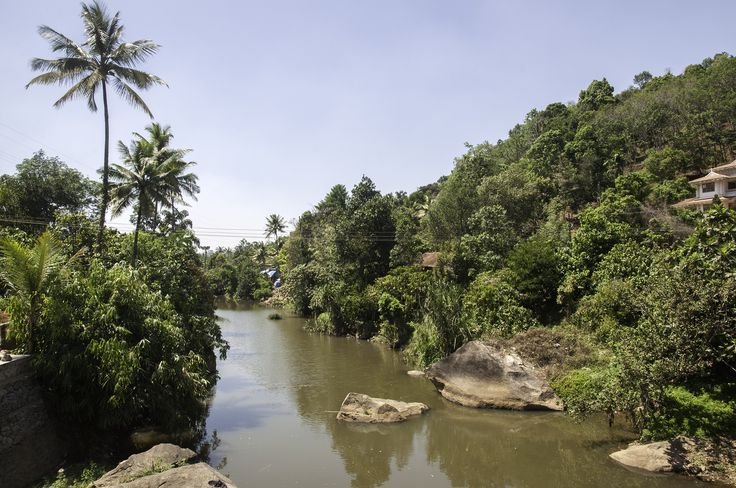Exploring the Sacred and Cultural Essence of the Cauvery River

The Cauvery River is one of South India’s most important rivers, playing a lifeline to millions of inhabitants in Karnataka, Tamil Nadu, Kerala, and Puducherry. Greatly known for agricultural activity and cultural importance, the river Cauvery supports paddy fields, various industries, and hydropower projects. However, the Cauvery is also associated with interstate water disputes, particularly with Karnataka and Tamil Nadu, which have been engaged in a long-standing dispute over rights to share water.

Indeed, this continuing battle emphasizes the need to balance regional interests, environmental needs, and economic development. As the population grows, agricultural expansion and climate change heighten the pressure on the river’s flow; therefore, joint water management is more important than ever.
The report deals with the origin of the Cauvery River, and its mythological importance to international disputes over the river’s use and current challenges. How dams, agriculture, and religious cults set up a relationship between communities along the river and the river have also been probed into.
Origin of the Cauvery River
The source of the Cauvery River is the Talakaveri Hills in the Western Ghats of Karnataka, about 1,276 meters above sea level. It is a spring inside Kodagu district, or more commonly, Coorg. The river flows across both Karnataka and Tamil Nadu to finally drain into the Bay of Bengal. It measures approximately 800 kilometres in length, and its basin area covers about 81,155 square kilometres.

The Cauvery passes through important towns and cities like Mysuru, Thanjavur, and Tiruchirappalli along its course. It is an important river as it provides water for various purposes: agriculture, drinking, and industrial sectors. The Kabini, Hemavathi, Bhavani, and Noyyal rivers are also major tributaries that contribute to the flow and significance of the Cauvery.
The construction of dams and reservoirs has assisted in controlling the flow of water in rivers, such as the Krishna Raja Sagar (KRS) Dam of Karnataka and the Mettur Dam of Tamil Nadu, for irrigation and hydric power. However, the whole scenario of a dam’s construction changes the original course of the river and causes seasonal drought and regional conflict.
Mythology and Cultural Significance
The Cauvery River occupies an important position in Hindu mythology and temple traditions. Legend has it that the river is said to be the earthly incarnation of Goddess Kaveri who came down from heaven to bless mankind. The most popular myth around the river has to do with the story of Sage Agastya. He carried the river around in a pot. When Goddess Kaveri took the form of water to escape confinement, he dropped it unwittingly. This event is remembered in various festivals as it symbolises the divine origin and life-giving properties of the river.

A river plays an important role in South Indian temple cultures. It passes close by several of the area’s most important temples: the Sri Ranganathaswamy Temple at Srirangam and the Brihadeeswara Temple at Thanjavur. Millions of pilgrims come each year to worship there and bathe spiritually cleansing in the waters of the Cauvery.
Festivals such as Cauvery Pushkaram and Aadi Perukku celebrate the river’s abundance and its importance in agricultural cycles. During such festivals, people gather on both sides of the river banks to pray with charity and celebrate the river’s life-giving powers. The Cauvery is additionally very closely related to classical South Indian literature, music, and dance, inspiring hundreds of devotional songs and poems.
Historical Water Disputes Between Karnataka and Tamil Nadu
Disputes over the sharing of Karnataka and Tamil Nadu’s common waters, as far as the Cauvery in India is concerned, date back 122 years, making it one of the oldest and most rancorous disputes over water sharing in the country. Its historical roots trace back to a conception during the British colonial period when the princely state of Mysore (now Karnataka) and the Madras Presidency (now Tamil Nadu) entered into agreements in 1892 and 1924. Among the latter, the amount of usage to be allocated for agriculture was fixed to the Madras Presidency, with the two provinces of Mysore and Coorg being placed in different usage limits.

Phases of the Dispute:
- Post-Independence Period: After gaining independence, Karnataka wished to renegotiate most of the treaties it regarded as uneven and restrictive to the state’s potential and ability to expand its irrigation systems. Tamil Nadu already had an extensive network of irrigation canals, which opposed Karnataka’s demands, worried that this would reduce available water for Tamil Nadu’s farmers.
- The intervention of the Supreme Court: It grew into a full-fledged controversy in the 1970s when Karnataka constructed the Harangi Dam across the river, which further reduced the flow of water downstream. Tamil Nadu filed a suit for relief with the Supreme Court, which led to the creation of the Cauvery Water Disputes Tribunal (CWDT) in 1990. The tribunal’s mandate was to resolve the dispute and share water between the two states.
- Final Verdict and Ongoing Challenges: In 2007, CWDT delivered the final verdict, which allotted 419 TMC million cubic feet to Tamil Nadu, 270 TMC million cubic feet and lesser quantities to Karnataka, Kerala, and Puducherry. However, implementing such a judgment was problematic for several reasons. Karnataka often disputes the release of water with Tamil Nadu, mostly during drought years.
- Recent Developments: It remains an unsolved issue, and tensions become flared-up season when Karnataka reports poor rainfall. One regular complaint that Tamil Nadu makes is that water is not being released by Karnataka as allocated, which has resulted in routine protests and political issues. The change in climate and another factor that has played along with the vagaries of monsoons at times have further complicated the issue and require a sustainable approach to water management practices.

Dams, Agriculture, and Modern Challenges
The Cauvery River is essentially essential for agriculture, especially in Tamil Nadu, where many paddy cultivation activities are carried out. The river’s water is relied upon in great measure for irrigation purposes to cultivate rice, sugarcane, and cotton among many farmers in the Cauvery Delta region. Similarly, in Karnataka, agricultural activities have been on the rise in the Mandya and Mysuru regions, where the principal crops are mainly sugarcane and ragi.
The construction of dams and reservoirs on the Cauvery has been crucial to controlling its flow. Major infrastructural projects, including the Krishna Raja Sagar (KRS) Dam and Mettur Dam, provide water for irrigation purposes, hydropower generation, and drinking use. Still, these measures have also resulted in low downstream flows during the dry seasons, which grieve Tamil Nadu farmers.

Environmental and Developmental Issues:
- Water Scarcity: The controversy is further complicated by water scarcity, which Karnataka and Tamil Nadu face during years of weak monsoons. Since these states have experienced decreasing water tables due to the overexploitation of groundwater, the issue of water scarcity is a relevant discussion item.
- Impact of Climate Change: Climate change has made the rainfall pattern unpredictable, which impacts river flow. Both states must adopt climate-resilient agricultural practices to adjust to the changing environment.
- Urbanisation and Pollution: The highly rapid urbanisation and industrialisation along the Cauvery River have caused a number of pollutions, as untreated sewage and industrial wastes are released into the Cauvery. This pollution is a serious threat to the health of the river and also to the humans who depend on it for drinking and agricultural purposes.

Conclusion
The Cauvery River offers much more than the water resource per se to those of Karnataka and Tamil Nadu-it is a symbol of life, culture, and conflict. On the one hand, it supports agriculture, industry, and religious tradition, but on the other hand, it underlines the complexities of shared sources of water. The issue today remains with respect to the dispute over the Cauvery water and sums up the broader challenge of development, environmental sustainability, and interstate cooperation.
Karnataka and Tamil Nadu would have to embark together on adopting collaborative water management policies to ensure equity in this most essential resource. Nothing is better than innovation to go about this through rainwater harvesting, adopting the most efficient irrigation systems, and sustainable agriculture ways to increase the demand for water within these two states.
Ultimately, the Cauvery River teaches us a powerful lesson: cooperation and sustainable development are the most effective ways to resolve conflicts and achieve a better future for all. As both states move toward a common vision for the river’s future, it must not be forgotten that the Cauvery is more than a water supply; it is a lifeline connecting communities, traditions, and livelihoods across southern India.


